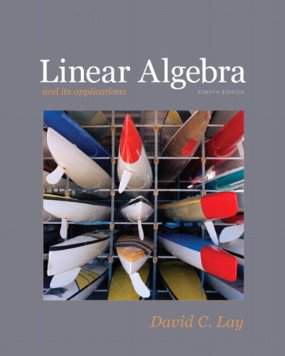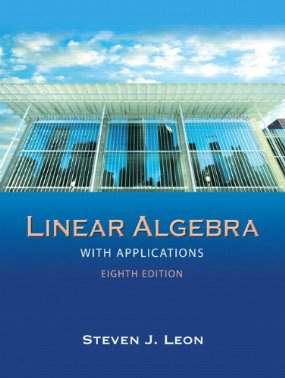Connecting...

This is a quick preview of the lesson. For full access, please Log In or Sign up.
For more information, please see full course syllabus of Linear Algebra
For more information, please see full course syllabus of Linear Algebra
Linear Algebra Lines and Planes
Lecture Description
Up until now we’ve discussed things like vectors and how to transform them into a different vector, but now it’s time to finalize our knowledge with vectors with a discussion on lines and planes. You’ve probably been introduced to some math involving planes and should know a lot involving lines already, but this video will serve to solidify your understanding of what lines and planes are mathematically. This video will also introduce parametric equations; converting from a Cartesian to a parametric system will help you see problems from a different perspective, and thus make them easier to solve.
Bookmark & Share
Embed
Share this knowledge with your friends!
Copy & Paste this embed code into your website’s HTML
Please ensure that your website editor is in text mode when you paste the code.(In Wordpress, the mode button is on the top right corner.)
×
Since this lesson is not free, only the preview will appear on your website.
- - Allow users to view the embedded video in full-size.
Next Lecture
Previous Lecture










































 Answer Engine
Answer Engine




1 answer
Sun Jul 12, 2015 7:14 PM
Post by matt kruk on July 12, 2015
hi professor for the last example could we form two vectors using the 3 points we were given then take the cross product and plug it in to the plane equation ?
1 answer
Mon Nov 25, 2013 5:24 PM
Post by Joel Fredin on November 17, 2013
normally, isn't the formula, ax+by=c and then it should be ax+by-c=0 or i might be wrong?
1 answer
Tue Sep 3, 2013 2:26 AM
Post by Giuseppe Fabiano on September 2, 2013
Regarding the last example, could we also have formed a system of equations imposing all three points to be orthogonal with a certain vector? Then, could we have obtained the equation of the plane by using the vector found and one of three points?
1 answer
Tue Jun 18, 2013 6:33 PM
Post by Manfred Berger on June 18, 2013
My question draws on a few concepts that you introduce later in this course, but which have given me trouble for a while now. In the section on planes in R3 of this lecture you basically use a single given vector and the orthogonality relation to set up subspace of R3. My question is: Why is it not sufficent to find a vector that is not in the span of the given one? Why does one need orthogonality to do that?
2 answers
Last reply by: Manfred Berger
Tue Jun 18, 2013 5:56 PM
Post by Manfred Berger on June 15, 2013
Why is linear independence not strong enough to define a second vector for a plane in R^3?
1 answer
Tue Feb 26, 2013 12:12 PM
Post by Nischal Panwala on February 25, 2013
Hi prof. Raffi
I have a book name Linear algebra and its application by david c.lay.
do you have lecture for invertible transformation matrices, partitioned matrices, Application to computer graphics, and subspace of R^n.
Please reply ASAP, because my exam is coming really soon
Thanks.
1 answer
Wed Aug 29, 2012 4:42 PM
Post by Ian Vaagenes on August 29, 2012
I've been really enjoying the course but this was the first lecture where I was confused as to what I was supposed to learn. In the beginning we learned a different way of representing 2-d lines, and then switched when representing lines in 3d space. Couldn't we represent the 2-d lines essentially the same as 3d except the Point and direction vectors would be 2x1 instead of 3x1?
1 answer
Sat Jul 28, 2012 4:59 PM
Post by Winnie So on July 27, 2012
Hi Raffi, can i find out why in example 3 when writing the parametric equation of x2, why was it x2=2- t (-3) rather than x2= 2 + t (-3)?
Thanks.
1 answer
Sat Jul 14, 2012 8:59 PM
Post by Ben-Hwa Hu on July 8, 2012
The equation for the plane in Example 5 should be: 5x - 2y + 3z - 11 = 0